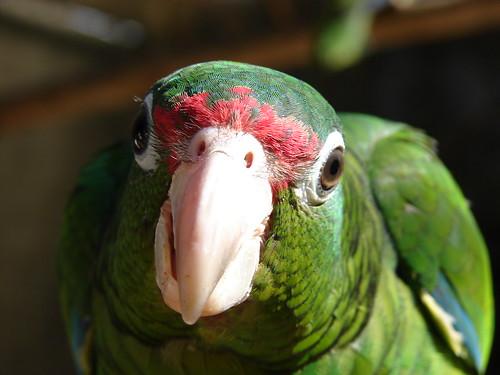 Puerto Rican Parrot. Image: Pablo Torres, USFWS Despite more than 40 years of conservation efforts, the Puerto Rican parrot (Amazona vittata) remains one of the world's most critically endangered birds, with only an estimated 30 to 40 parrots left in the wild. They exist in just a single location, Puerto Rico's El Yunque National Forest.
Puerto Rican Parrot. Image: Pablo Torres, USFWS Despite more than 40 years of conservation efforts, the Puerto Rican parrot (Amazona vittata) remains one of the world's most critically endangered birds, with only an estimated 30 to 40 parrots left in the wild. They exist in just a single location, Puerto Rico's El Yunque National Forest.Why has the population languished? A new study, published in this month's issue of the journal Ecological Monographs, blames a number of factors, including inbreeding, low hatch rates, the inability find mates... and hurricanes.
According to the study, hurricanes are the primary recent factor keeping the parrot's population from growing. In just one example, 1989's Hurricane Hugo killed more than half of the wild parrots, reducing their population from 47 to 22.
Before this study, predators were assumed to be the biggest reason why Puerto Rican parrot populations has remained stagnant. Now, it looks like environmental factors have an even greater role, especially since the core population is already so small.
The authors of this study have recommended creating a second wild population of parrots elsewhere on Puerto Rico, to help reduce the risk of extinction from hurricane strikes. They report that the process to create a second habitat has already been initiated.
Let's hope they move quickly. Over the last ten years, global warming has created a 40% increase in the number of tropical storms and hurricanes in the North Atlantic. This year's hurricane season is fast approaching. Who knows that the next storm will bring ... or take away, forever.